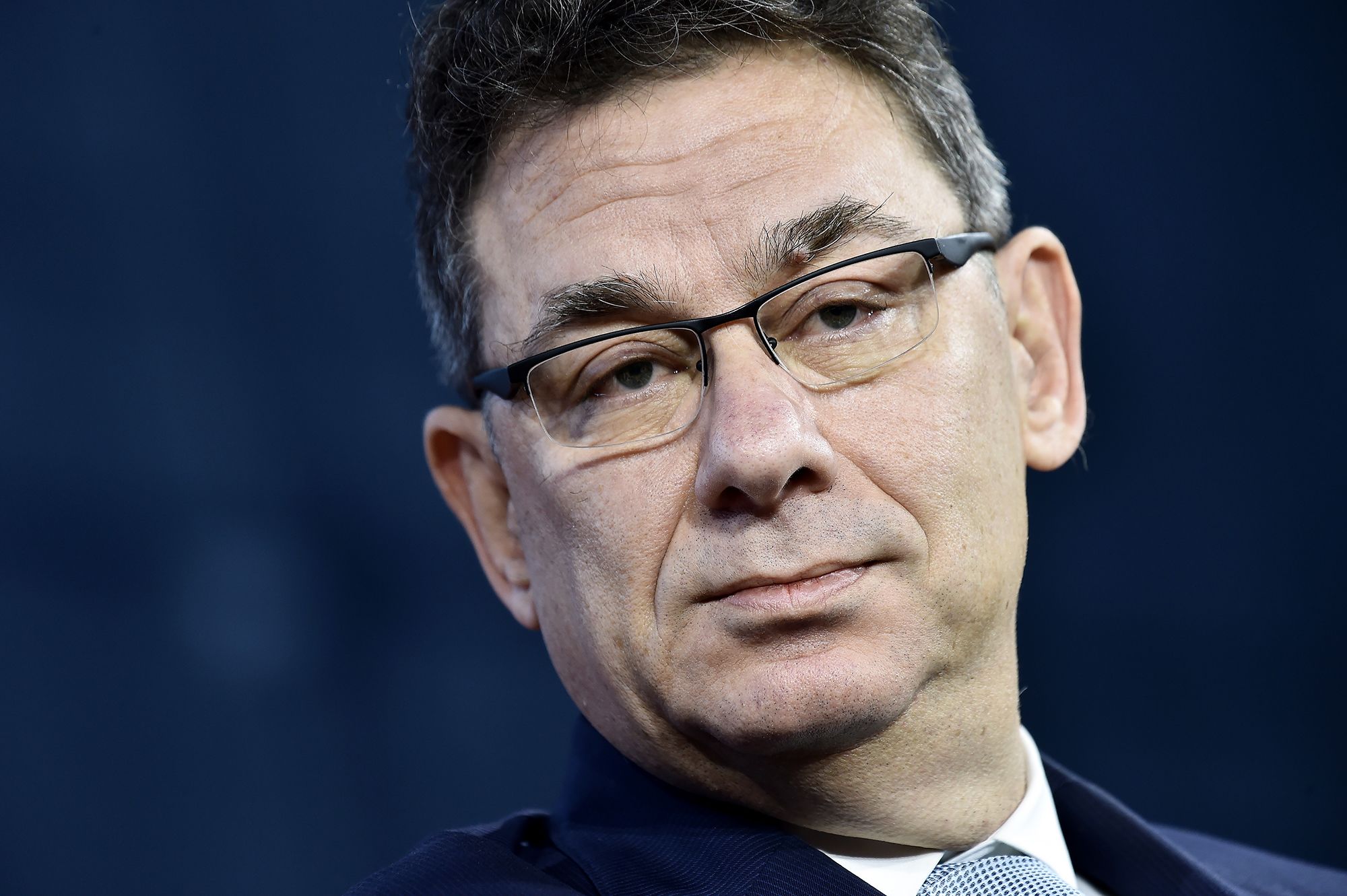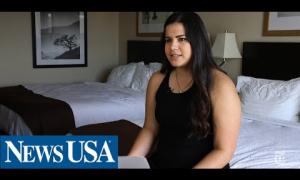“Good Intentions”
February 08, 2021
"This is the hardest part of practicing equity: It takes humility. We have to be willing to see ourselves, and the world around us, through the eyes of others."
About 40 years ago, I found myself sitting in a coffee shop, waiting to have a conversation with one of my students. We’d just finished a semester at the University of Missouri—Kansas City. I was her peer teacher, leading review sessions for the History of Science—a required course.
I’d done the job for only one term, but I loved it. Loved teaching, loved helping, loved the students—all one hundred-plus of them.
So when the semester came to an end, I couldn’t wait to see my evaluations. They were great—one after another giving me high marks and expressing thanks. I remember feeling this tremendous sense of pride—like maybe I had found my calling.
But as I got close to the end of the stack, I came across one that was unexpected. In the margin of the form, handwritten in pen, someone had commented: “I wonder if Mary is a racist.”
I kept staring at it, thinking it was a joke. One of those ironic puns that says the opposite of what is true. But it wasn’t. It was an actual question, written by one of my students.
Fortunately, even though the evaluations were anonymous, the student had signed her name. I knew her, had talked with her many times.
So after a few breaths, I decided to reach out.
That’s how I found myself sitting in a coffee shop, waiting to have a conversation that felt both perplexing and worrisome.
It was a hard meeting, for both of us. But we talked, a lot. Here is what I learned.
The young woman was one of two Black students in my class that year. They were friends. They had come to me together at the beginning of the semester, just to check in. They shared that they’d gone to the high school near campus. I’d heard of the school. It was thought to be a tough ride—limited resources, lots of disruptions, low academic performance. They were worried that the History of Science, a hard class, was a high bar for their first semester.
I empathized with them. I had struggled with the class in my first term. So I sprang into action. I thought about what I could do to make sure they succeeded. I made a plan, spent extra time, and worked to build their confidence.
Here’s what it looked like to them. I didn’t push. I gave them easier assignments. I congratulated them for minor successes. I held them to a different—lower—standard than I set for the rest of the class.
They felt it, every time—like a cut. And after a semester of me doing this, they did not feel confident. They felt unseen, skipped over. They wondered if maybe I was a racist.
Why wouldn’t they? For a whole semester, my students had observed the way I treated them, and how different it was from the standard I set for the rest of the class. I had used the information they had shared with me, about where they went to school, as an unintentional weapon against them.
Looking back, I see I was caught up in my own experience. I never asked them what I could do to be helpful. I just jumped in. I assumed I knew what they needed based on a few facts about their background. I let my good intentions—and the feeling of doing good—be my metric for success.
I remember this like it was yesterday. My student, her untouched coffee, the look on her face when she said, “I thought you understood me. You don’t even know what I’m capable of.”
The tyranny of good intentions
I failed in my responsibility to those students. But this story is not unique to me. It happens every day—with all of us. We think we know what is best for people. We want to do something to contribute. So we move in quickly, to fix, solve, or soothe before we ever bother to ask.
It’s the tyranny of good intentions. And it allows assumptions and biases to drive our behavior.
The fact that I’d done this—that I had judged my students’ abilities based on their background—devastated me. I entered college with a GED after dropping out of high school at age 15. So many times, well-intentioned people assumed they knew me—what I could do, what I needed, what I could be. Always a little less than what I had hoped for. And each time, it pained me—discouraged me. Until one day it didn’t—because someone looked past where I had come from and saw me for what I wanted to be.
But that’s the insidious thing about biases. They’re so deeply rooted in us, we don’t even realize we’re perpetuating them. It doesn’t matter how many times we’ve seen them or been victims of them—they repeat. Until eventually, they become our “truth.”
And I end up asking less of my two Black students from a low-income high school. And all of us settle for persistent gaps—between Blacks and Whites, men and women, rural and urban dwellers, those with and without advantage. Gaps that feel familiar, maybe inevitable, definitely embedded. So that even when we know aptitude, interest, and talent aren’t the privilege of a few, we see difference as deficiency. We see others as less.Against that picture, good intentions seem good enough.
The practice of equity
After the coffee, I went home and did what you might expect. I vowed not to repeat the same mistakes. I took classes, did anti-bias training, filled out countless workbooks.
What I learned is that the practice of equity requires accountability. And it takes work.
The fact is, humans have biases. Some, like unconscious biases, are impossible to completely eliminate. So we have to be intentional. We have to develop practices, behaviors, habits, and policies that minimize the impact of biases on our decisions. We also have to put down our armor of good intentions and own the outcomes, whether we meant to cause them or not.
And this is the hardest part of practicing equity: it takes humility. We have to be willing to see ourselves, and the world around us, through the eyes of others.
Accepting the difference between impact and intent takes continuous commitment. It also takes courage, to have hard conversations again and again. To listen, with curiosity, even when it feels bad. And to take what we learn and make practical change.
Only then we will be accountable for our impact. Only then can we really make a difference.
Am I a racist?
When I think back on that conversation with my student, I feel grateful. She was brave. And I learned.
But I also feel responsible—for making sure that people and their potential are seen. That they don’t have to fight for attention or prove that they deserve it.
For most of us, “Am I a racist?” feels easy to answer. Of course not. It’s almost reflexive.
But the question isn’t about that. It is about asking whether each day, we are equitably and intentionally giving people an opportunity, seeing their potential as boundless, and doing whatever they need to see that through.
People rise or fall to our expectations. And in this, we have the power to lift.
My students wanted me to believe in them. To validate that they belonged and treat them like that was true. We all have that ability—to see others as equals and to invest, mentor, and support.
The question is: will we use it?
Achieving equity in our society is an audacious goal—and it is long overdue. It will require systemic change that fundamentally alters the institutions we’ve built. But it will also require us.
Institutions are simply mirrors. They reflect who we are and who we want to be. If we change, so will they. So today, let’s begin. One person at a time. Starting with me. Starting with you.





Dear Ms. Daly:
RE: Good Intentions
I read and heard your story, your speech, whilst I was looking for a simultaneous practice, I am an interpreter. I was moved by your story. What a deep and meaningful story. How humble you speak. What a lesson of thought and understanding you gave your young student. What treasure she found from that couple of lines she was brave to write on her homework. It always amazes me to witness the accomplishments of so many who started with nothing, literally, and who through huge sacrifice and dedication reach unbelievable accomplishments. Bravery, and understanding. Where do I stand? I feel I have wasted what was given to me, so much that was given to me. Your student, where did she get the clarity? Possibly from being a survivor. I did not have the guidance of a teacher with your perception, all the pieces are coming together at this time of my life. I know now, the price of ignorance, academic ignorance is a high price to pay. The lack of that little paper to frame and hang on the wall, to validate one’s effort. You must feel happy inside knowing the difference you have surely made in so many young lives. Not everyone is so fortunate, I actually left school as soon as I could without a word of encouragement or question. The good news is that I am three weeks shy of 72 and I recently started a certificate program in the Monterey Institute of International Studies. The way you write about good intentions strongly resonates with my feelings. Good intentions are not enough I need to cross that bridge myself. Thank you! Yoyo.